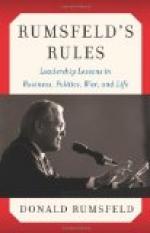On Saturday morning Sir George White sent a small force of cavalry and artillery to reconnoitre along the line of the interrupted railway. Some two thousand Boers were found in position near Elandslaagte, and accordingly during the day the British were reinforced by road and rail from Ladysmith, until in the afternoon the Boer position could be attacked by two battalions, three batteries, two cavalry regiments, and a regiment and a half of mounted infantry—about three thousand five hundred men. The Boers were completely crushed and a large number of prisoners taken, including the commander and the commanding officer of the German contingent. The British loss, however, as at Glencoe, was heavy, especially in officers. The force returned on Sunday to Ladysmith.
The British force at Dundee-Glencoe was thus still isolated, and until now no detailed account of its movements has reached England. On Saturday it was again attacked and, there is reason to believe, it again repulsed a large Boer force, probably the main northern column. On Sunday also the attack seems to have been renewed, this time apparently by two columns, one of which may have been composed of Free State troops from Muller’s Pass. Either on Sunday or Monday General Yule determined to withdraw from a position in which he could hardly hope without destruction to resist the overwhelming numbers brought to bear against him, especially as the Boer forces, either from the direction of Muller’s Pass or from Bester’s Station, were threatening his line of retreat by the Glencoe-Ladysmith road. Accordingly, leaving in hospital at Dundee those of his wounded who could not be moved, he retired along the Helpmakaar road, which he followed as far as Beith, about fourteen miles from Dundee, and near there he bivouacked on




